Get PeakVisor App
Sign In
Search by GPS coordinates
- Latitude
- ° ' ''
- Longitude
- ° ' ''
- Units of Length

Yes
Cancel
Share ×

Scan the QR code and open PeakVisor on your phone
❤ Wishlist ×
Choose
Delete
Quebec’s first national park, Mont Tremblant National Park is a large outdoor recreation area located in the southern part of the province. It is known for its skiing and hiking opportunities as well as its impressive scenery, all of which make it popular for people looking to escape the hustle and bustle of city life in Montreal. There are 18 named mountains in the park, the highest and most prominent of which is Pic Johannsen (932 m/3,058 ft) on the Mont Tremblant massif.
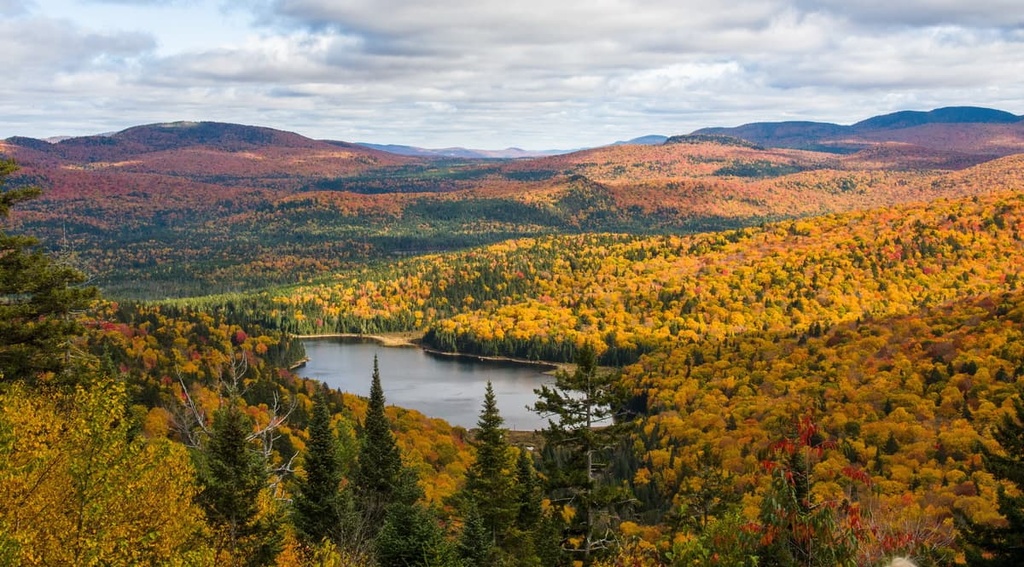
Mont Tremblant National Park (parc national du Mont-Tremblant) is a protected area located in the southern part of the Canadian province of Quebec. It is located in the administrative regions of Lanaudière and Laurentides to the north of the town of Mont-Tremblant.
The park contains approximately 1,510 sq. km (582 sq. mi) of land. This makes it the fourth largest national park in Quebec after Tursujuq, Ulittaniujalik, and Kuururjuaq, all of which are located in the northern part of the province in the Nunavik region of the Nord-du-Québec. In fact, it is more than four times the size as its nearest neighbor, parc national des Grands-Jardins.
Although the park’s name suggests that it is a federally managed recreation area, Mont Tremblant is actually protected on the provincial level.
It is a national park of Quebec (parc national du Québec) and it is protected under the Loi sur les parcs (Parks Act) of 1977. The park is managed by Sépaq (Société des établissements de plein air du Québec/Quebec Outdoor Establishments Company), which is tasked with managing most national parks of Quebec.
Alternatively, national parks of Canada managed by Parks Canada and are protected under the Loi sur les parcs nationaux du Canada (Canada National Parks Act) of 2000.
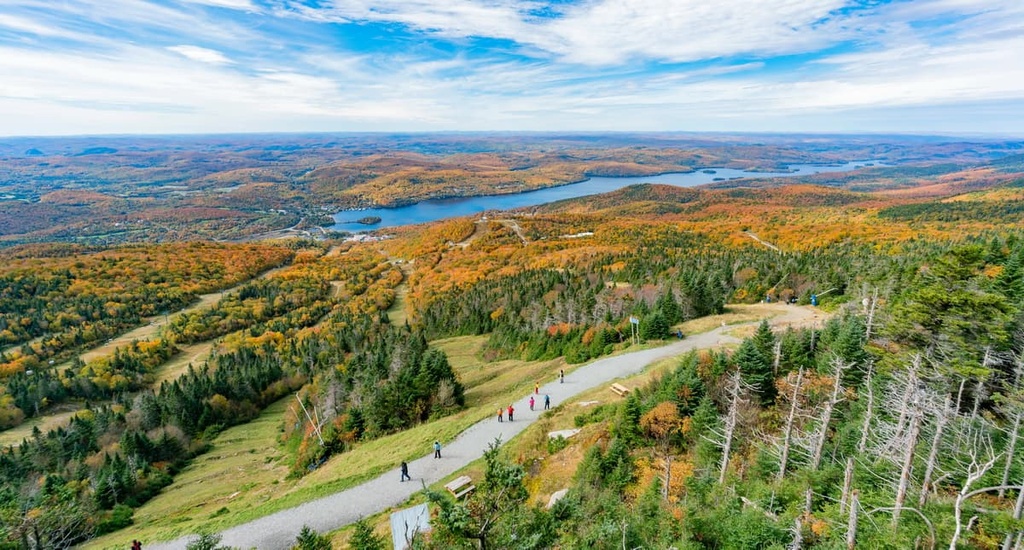
There are four main areas within Mont Tremblant National Park:
Mont Tremblant National Park is situated in a relatively remote part of southern Quebec, despite its proximity to Montreal, Ottawa, and the city of Trois-Rivières. It is located in close proximity to a number of other popular outdoor recreation destinations, including:
However, the closest national parks to Mont Tremblant are Grands-Jardins, Saguenay Fjord, Jacques-Cartier, Monts-Valin, and Pointe-Taillon, all of which are located a sizable distance to the northeast.
The peaks in Mont Tremblant National Park are part of the Laurentian Mountains (Laurentides). One of the longest mountain ranges in eastern Canada, the Laurentides extend from southern Quebec and make their way all the way to southeastern Labrador along the northern coast of the Saint Lawrence River.
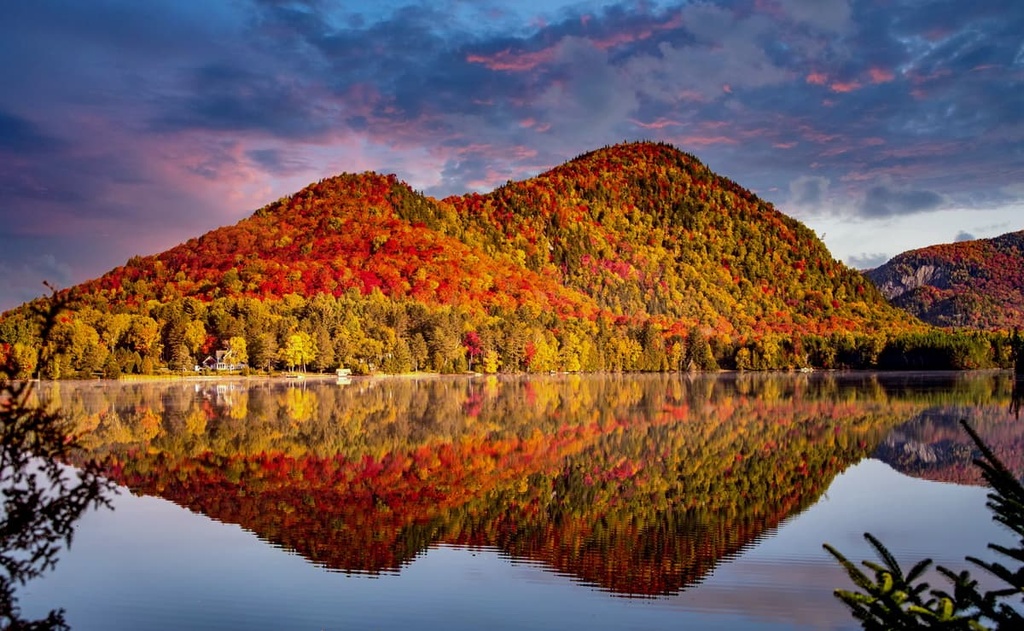
Like the rest of the Laurentides, Mont Tremblant National Park is underlain by the Canadian Shield. The Canadian Shield is a huge area of Precambrian igneous and metamorphic rock that’s found throughout much of northern and eastern Canada as well as parts of Greenland and the northern US.
The rocks in the Canadian Shield form the core of the North American Craton. That said, the rocks in the park are part of the Grenville Province, which is among the youngest of the geological provinces on the Canadian Shield. These rocks are primarily gneisses, though there are some intrusive igneous rocks and sedimentary rocks in the region, too.
However, the mountains themselves are among the oldest peaks in the world. They formed mostly during the Grenville orogeny, which took place during the Mesoproterozoic (1.6 to 1 billion years ago. This mountain building event was also responsible for creating peaks as far north as Scotland in the United Kingdom and as far south as Mexico.
Other notable geologic features of the park include its extensive glacial landforms. Like much of Canada, this region was covered with thick ice sheets during the last major glaciation. As a result, much of the region features glacial till deposits. Most of the park’s highest summits and lowest valleys were also eroded away or carved out by these massive glaciers.
Mont Tremblant National Park is home to a variety of ecosystems. The park has a cold temperate climate with relatively cool summers and very cold winters. It generally receives about 1,000 mm (39 in) of precipitation each year, including considerable snowfall.
That said, the specific ecosystems found in Mont Tremblant National Park vary greatly depending on your location, elevation, and aspect.
Much of the park features maple-yellow birch forests, which are dominated by hardwood trees. These forests feature a mix of their namesake maple and yellow birch as well as boreal species like yellow clintonia and balsam fir.
However, at higher elevations, harsh weather patterns are less tolerant to deciduous trees. In these areas, the forests are primarily home to white spruce, red, spruce, and black spruce.
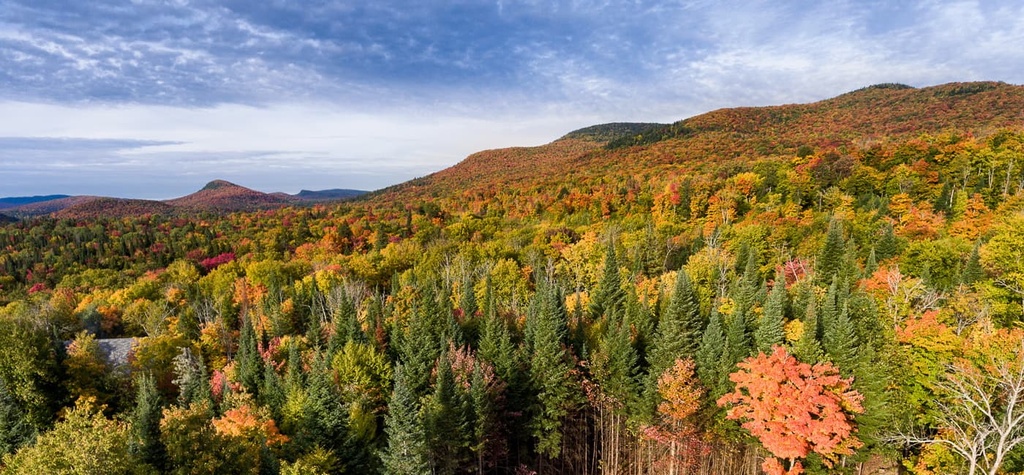
But keep in mind that much of what is now Mont Tremblant National Park was heavily logged in the past. In particular, the park was extensively logged from the late nineteenth century to the late 1980s. This logging allowed certain sun-loving species like white birch and smaller evergreens, like balsam fir, to grow more easily in the region.
Although logging is still allowed in certain parts of the Laurentides (outside of the park and other protected areas), the region’s forests are slowly returning to their climate-typical composition, which is primarily maple and yellow birch.
As far as wildlife goes, Mont Tremblant National Park is no slouch. The park is home to over 40 mammal species, nearly 200 bird species, over 30 fish species, and more than 20 amphibian and reptile species.
Mammals found in the park include black bears, moose, deer, red squirrels, Canadian beavers, river otters, and mink. Both wolverines and mountain lions have been spotted in the park, though it’s unclear if they actually live within its boundaries.
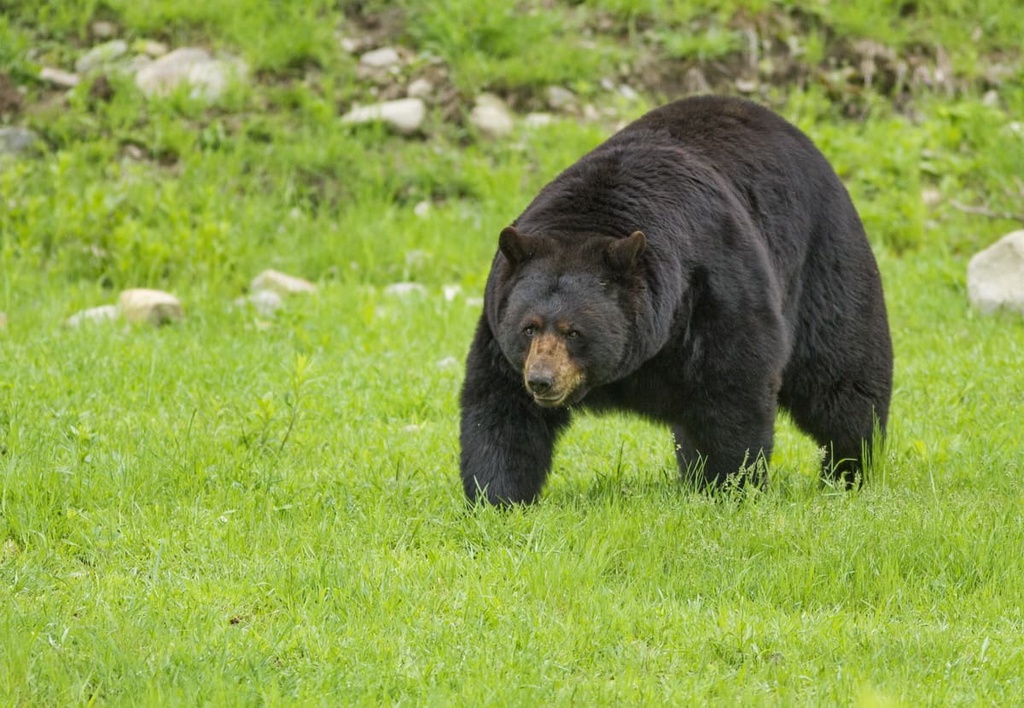
The eastern wolf is also regularly spotted in the park. Researchers believe that there are between four and five wolf packs in the park that contain a total of 35 individuals.
Bird-wise, the park is home to species like great horned owls, winged hawks, barred owls, Canada geese, and ospreys. Bald eagles and golden eagles are also sometimes spotted in the park.
Additionally, Mont Tremblant National Park is home to a great selection of fish, such as pike and brook trout. You can also find painted turtles, green frogs, pickerel frogs, and wood turtles in the park.
The land that is now part of Mont Tremblant National Park has long been home to humans. Mont Tremblant is located on the traditional territory of multiple Algonquin First Nations, in particular the Weskarini, who have lived to the north of what is now the Ottawa River (Rivière des Outaouais/Kitchissippi) since time immemorial.
The first peoples of European descent to settle in the area around what is now Mont Tremblant National Park were perhaps French Canadians who established the town of Mont-Tremblant in the 1870s. Not long afterward, logging became a particularly powerful industry in the region.
Around the same time, in 1894 plans for a sanatorium on Mont Tremblant started to gain traction. The government of Quebec agreed to the creation of the sanatorium and decided to establish a state forest reserve at the same time.
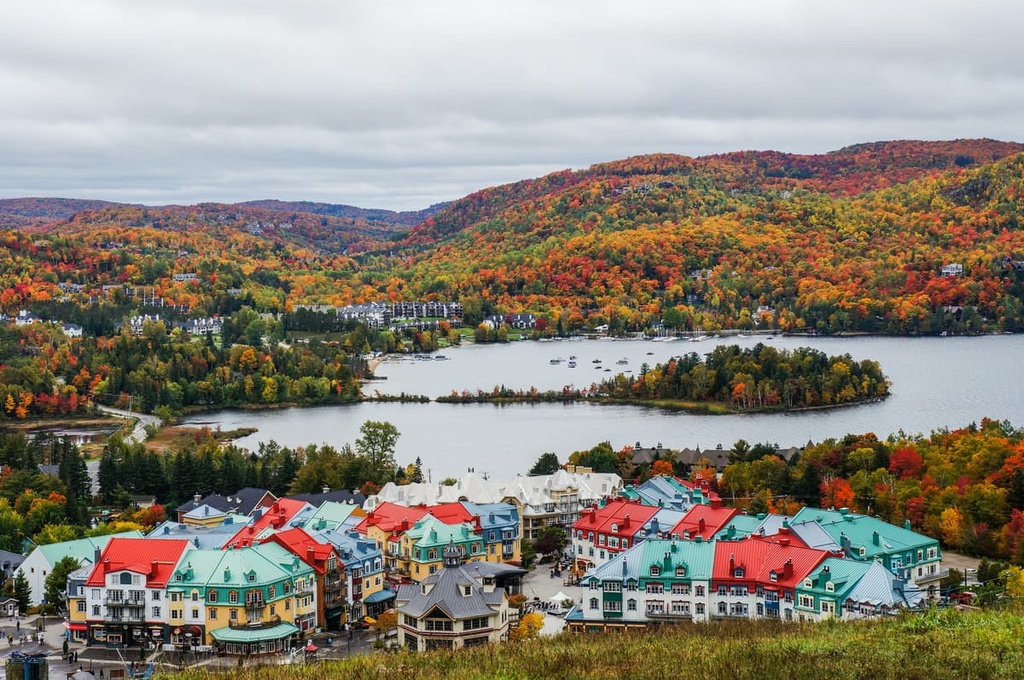
In 1895, the provincial government established parc de la Montagne-Tremblante, which makes the modern park the oldest national park in Quebec. At the time, the park’s boundaries were much smaller and it primarily included the Mont Tremblant massif.
Although the sanatorium was never built, the government of Quebec substantially expanded the park’s boundaries in 1925. During this time, logging was still a major industry in the region though many private clubs had fishing and hunting privileges in the region.
The first skiers began to venture to the park around the same time. The first recorded ski ascent of Mont Tremblant occurred in 1916. During the 1920s, local skiers like Herman Smith Johannsen established some of the region’s first ski trails.
By the 1930s, pressure had started to turn the forest reserve into a park that more closely resembled the national parks in the US with their emphasis on the conservation of nature.
In the 1930s, an American by the name of Joe Ryan established Canada’s first chairlift on Mont Tremblant. Just before the turn of the decade, in 1939, Ryan also opened a modern ski resort in Canada at the Mont-Tremblant Lodge, helping to cement the region as a popular outdoor recreation destination.
From the 1940s to the 1960s, Mont Tremblant was one of the most heavily visited outdoor recreation areas in the southern part of Quebec. The park created campgrounds and other amenities, though it was technically still a forest reserve that allowed for logging and private hunting club landholdings.
In 1977, the passage of the Parks Act officially ended logging and hunting in Mont Tremblant. The reserve was formally designated as a park in 1891 and its status as a national park was formally confirmed in the year 2000.
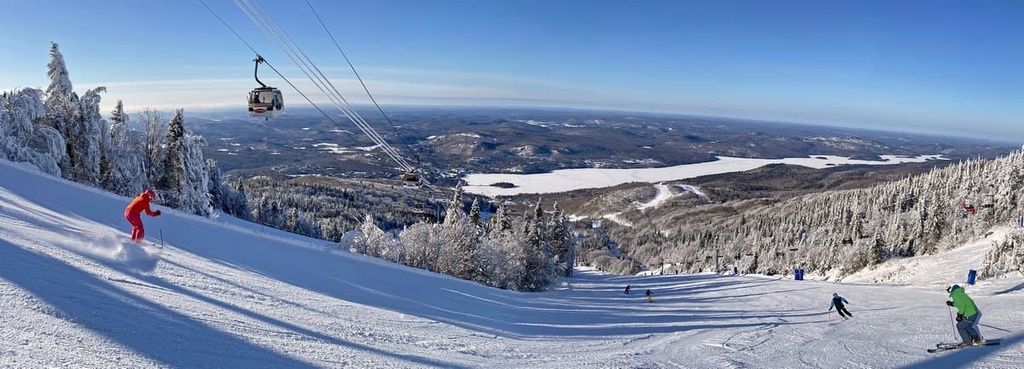
Mont Tremblant National Park is a true hiker’s paradise. Here are some of the best hikes in the park to enjoy during your next trip to the park.
One of the most popular hikes in the park, La Coulée Trail is a 8.6 km (5.3 mi) round-trip adventure that take you along the La Roche and the La Corniche trails
This hike doesn’t reach any particular sumits, but it does take you to three scenic viewpoints. These viewpoints overlook Lac-Monroe and they offer excellent vistas of the surrounding region.
You can start this hike from La Roche Trailhead. From the trailhead, you’ll start climbing uphill on a well-traveled path until you reach each of your view points. Eventually, you’ll make it to La Corniche Trailhead.
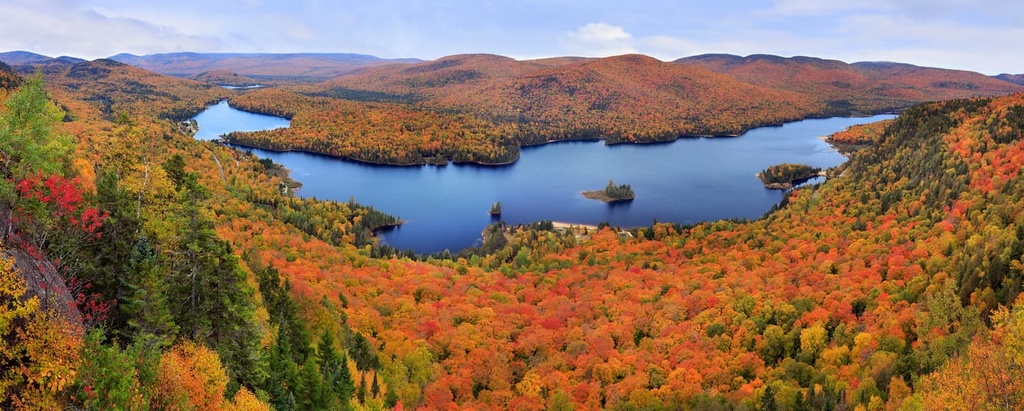
If you have two cars and can arrange a shuttle, you can end your journey at La Corniche Trailhead after hiking 6.2 km (3.8 mi). Or, you can walk along the bike path that connects La Corniche and La Roche trailheads to turn this into a loop trail.
La Chute-du-Diable is one of the most accessible waterfalls in the park. This short 0.8 km (0.5 mi) trail takes you on a quick out-and-back adventure to see the falls that’s great for the whole family.
The trailhead for this hike is located just to the north of the discovery center in the Diable sector, about a 15 minute drive away from the trailhead for La Corniche.
You can also combine this hike with a quick trek to Les Chutes-Croches, which are located a short drive to the south. This trail is also about 0.7 km (0.4 mi) long, so it makes for a great afternoon trip.
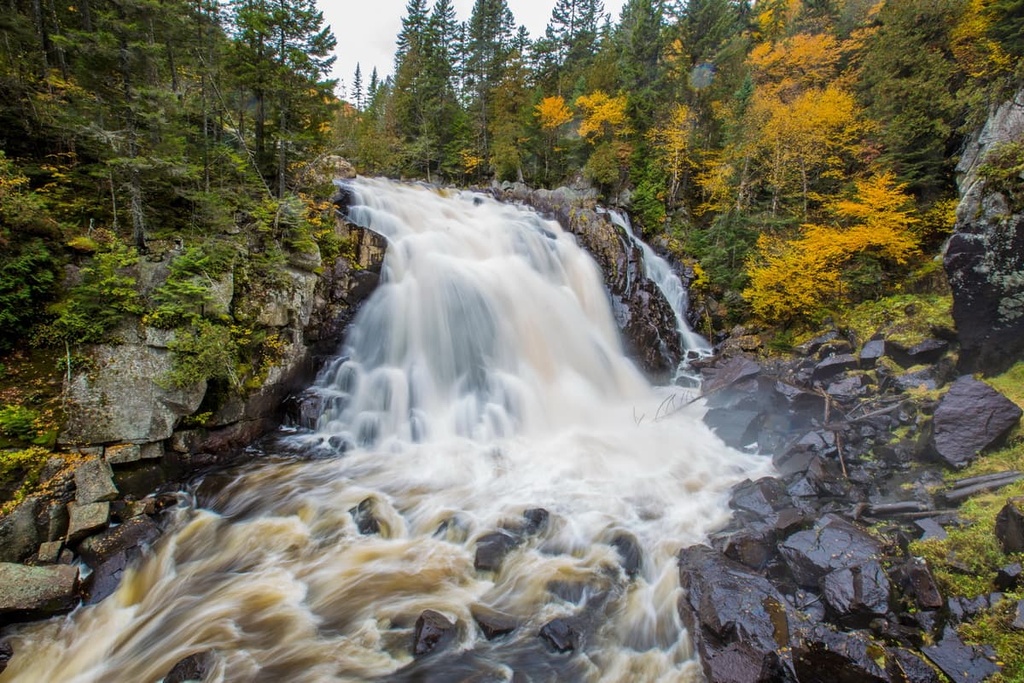
For the peak baggers among us, the Johannsen-Sommets-Grand Brule Trail is one hike that you just can’t miss.
This challenging 17.7 km (11 mi) hike begins in the village of Mont-Tremblant on the Ruisseaux Trail, which is used as a ski slope in the winter. You’ll then follow along this trail until you reach the Caps Trail, which will lead you to the Johannsen Trail and the Sommets Trail.
Throughout this hike, you’ll gain about 600 m (2,000 ft) in elevation as you make your way to the highest peak on the Mont Tremblant massif: Pic Johannsen. After you reach Johansen, you’ll also get to summit Tremblant before you head down the Grand Brule Trail. This trail will bring you back to your starting point in the village of Mont-Tremblant.
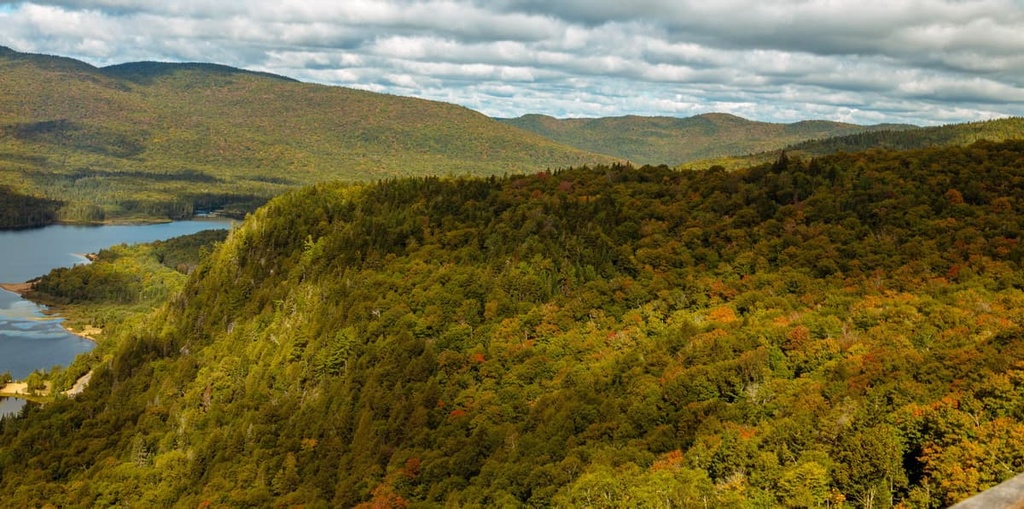
In addition to hiking, there are plenty of other excellent outdoor activities for visitors to enjoy in Mont Tremblant National Park. Here are some other great activities to add to your itinerary during your next trip.
One of the most iconic activities in Mont Tremblant is the park’s via ferrata in the Vache Noire. There is only one area for via ferrata in the Diable sector, but there are multiple routes for visitors to choose from based on their experience and comfort levels.
Via ferrata is offered in the park during the summer and fall months. Anyone looking to climb the via ferrata in the park must sign up for a guided tour with a professional guide. You can book your via ferrata adventure on the Sépaq website.
The sheer number of lakes and rivers in Mont Tremblant National Park make the region a prime destination for paddlers.
In fact, the park is a great place for anyone that loves water sports as it offers an abundance of canoeing, kayaking, and paddle boarding opportunities. You can rent boats at most of the park’s main visitors centers during the summer months. Sépaq also offers a range of guided paddling trips for visitors to enjoy.
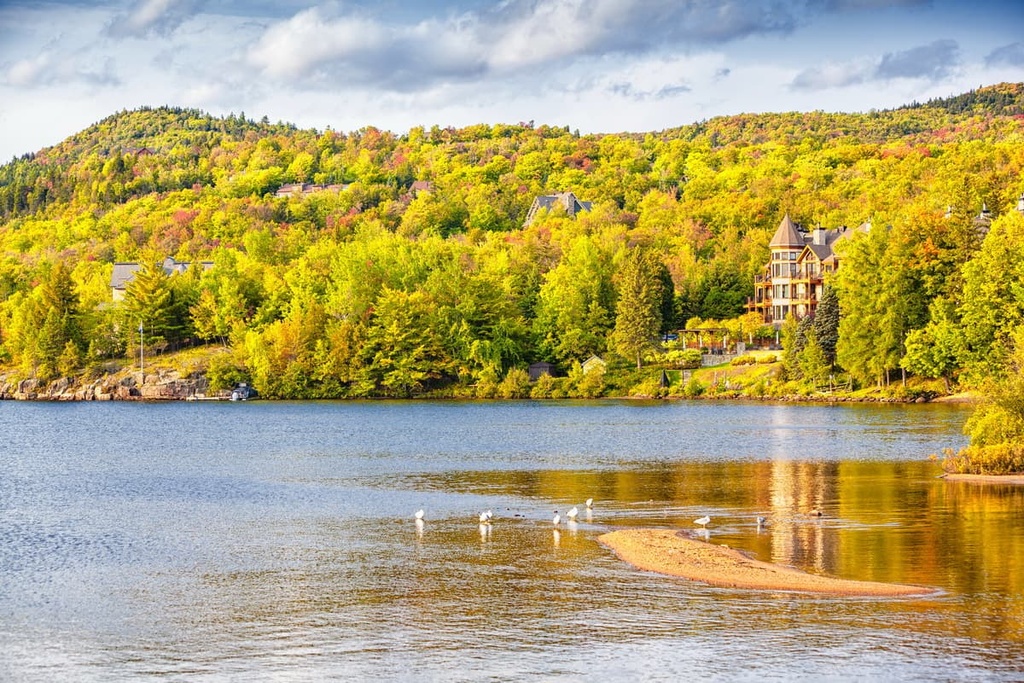
Note that fishing is available in the park’s waterways so long as you have the right permit. You must book your fishing tour in advance. You can also book a fishing package that includes overnight accommodations in the park.
Finally, no wintertime trip to Mont Tremblant would be complete without a skiing adventure. The park offers cross country skiing on its maintained trails, though you must purchase a day or season pass before you start skiing.
Mont Tremblant also has a network of over 100 km (60 mi) of backcountry ski trails, most of which feature conveniently located backcountry huts. Reservations are required if you want to stay in these huts.
Alternatively, you can go downhill skiing at the Mont Tremblant Ski Resort, most of which is technically located just outside the park boundaries. The ski resort sells daily ski passes as well as package deals. You can also take lessons or rent equipment at the resort.
Or, if skiing isn’t quite your style, you can go snowshoeing, sledding, or fat biking in the park. Snow tubes and snowshoes are available for rent at the park, but cyclists must bring their own fat bikes for their adventures.
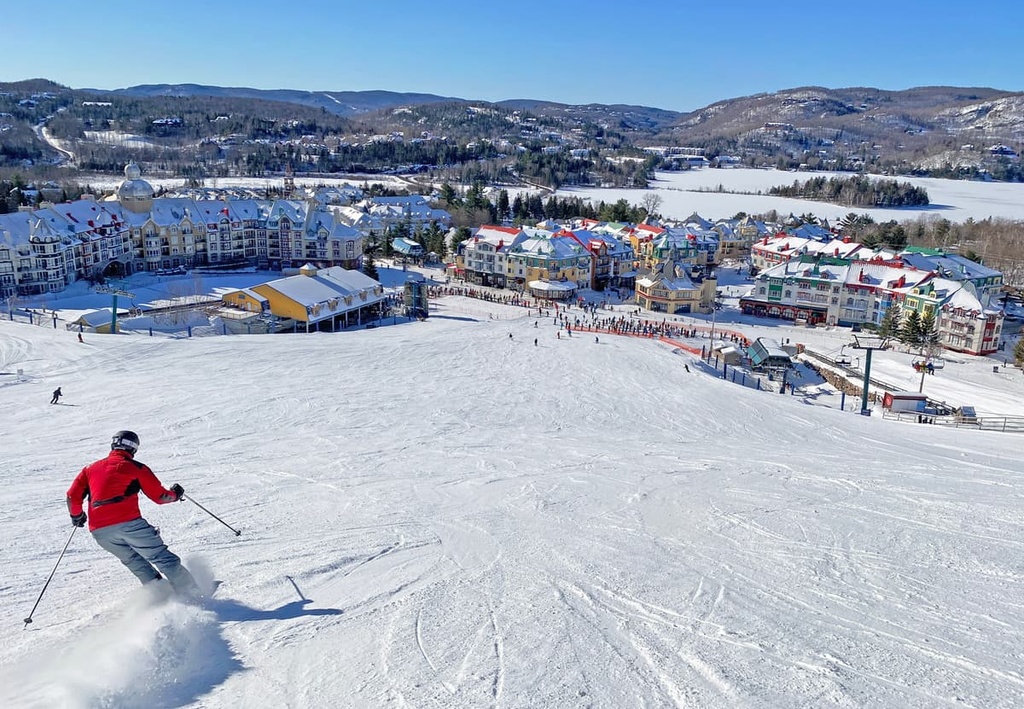
Mont Tremblant National Park offers plenty of different accommodation and camping options for people looking to spend the night in the park. Here are some of the many accommodation options available in the park for you to check out.
There are nearly 900 individual campsites located in Mont Tremblant National Park. Each of the park’s campgrounds offers a different experience for visitors and some feature more amenities than others.
Some of the many campgrounds in the park include:
Note that some of these campsites are only appropriate for tent camping while others can accommodate RVs. It’s essential that you double-check the amenities available at a given campsite before your trip.
Additionally, reservations are highly recommended at all of the park’s campgrounds. You can make a reservation on the Sépaq website.
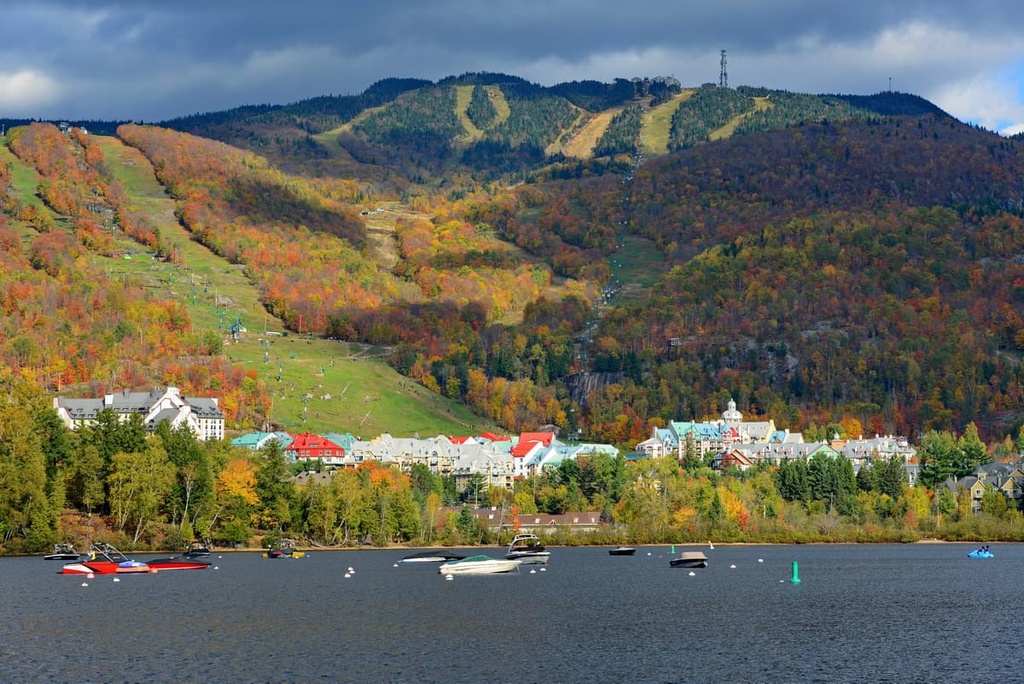
Ready-to-camps are a type of overnight accommodation offered in Quebec national parks. These accommodations are canvas tents that come complete with everything you need to comfortably camp during the summer months.
In Mont Tremblant National Park, there are 31 Étoile ready-to-camps, which are cube-shaped canvas tents that can accommodate up to 6 people. There are also 49 traditional ready-to camps, which feature a classic A-frame structure and can accommodate 4 campers.
As is the case with the park’s campgrounds, reservations are highly recommended for ready-to-camps. You can make a reservation on the Sépaq website.
There are dozens of huts, cabins, and yurts available in Mont Tremblant for visitors who want a more luxurious nature experience.
The park’s huts are only accessible on foot so hiking, snowshoeing, or skiing is required to reach your accomodation for the night. These huts can accommodate between 2 and 14 people and most are available all year long. They are particularly popular during the winter season for backcountry ski trips. You can only reserve huts by calling the park at +1 (800) 665-6527.
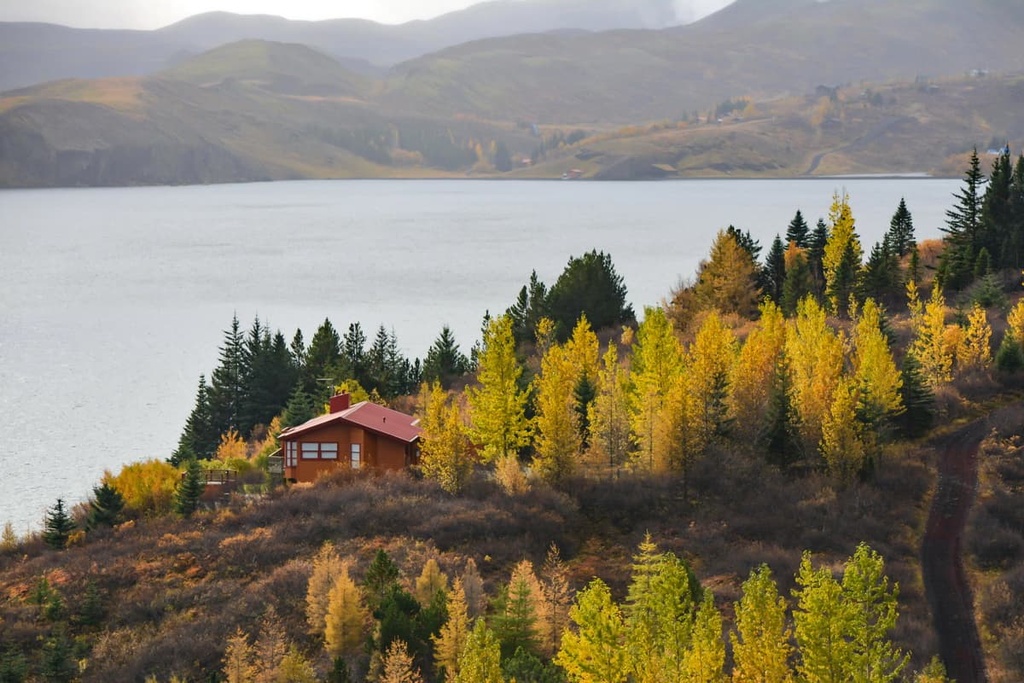
Additionally Mont Tremblant offers a number of vehicle-accessible cabins in most of its campgrounds. Each cabin is slightly different and most can accommodate between 2 and 6 people. You must reserve your cabin in advance on the Sépaq website.
Finally, Mont Tremblant is home to a collection of yurts, all of which are located in the Assomption sector. These yurts are only available in the summer months and they can each accommodate up to 4 guests. Note that these yurts generally don’t have running water, but they have all the other amenities you need for a few nights in the great outdoors.
Last but not least, we have backcountry camping, which is available in the park by permit and reservation only.
During the summer months, you can go canoe camping along the Diable and L’Assomption rivers or on some of the park’s many lakes. The park has a list of established canoe camping trips that feature conveniently placed campsites. You can reserve campsites by calling the park at +1 (800) 665-6527.
Backcountry hiking expeditions are also allowed in the national park during the summer months. Anyone looking to venture into the park backcountry needs to apply for an access permit and agree to abide by park rules. You must apply for a backcountry access permit by mailing a permit application to the park’s administrative offices at least 1 week in advance.
Alternatively, during the winter, experienced campers can venture into the park’s remote campsites on a winter camping trip. Reservations are also required for winter camping in the park. These can be made by calling +1 (819) 688-2281, ext. 0.
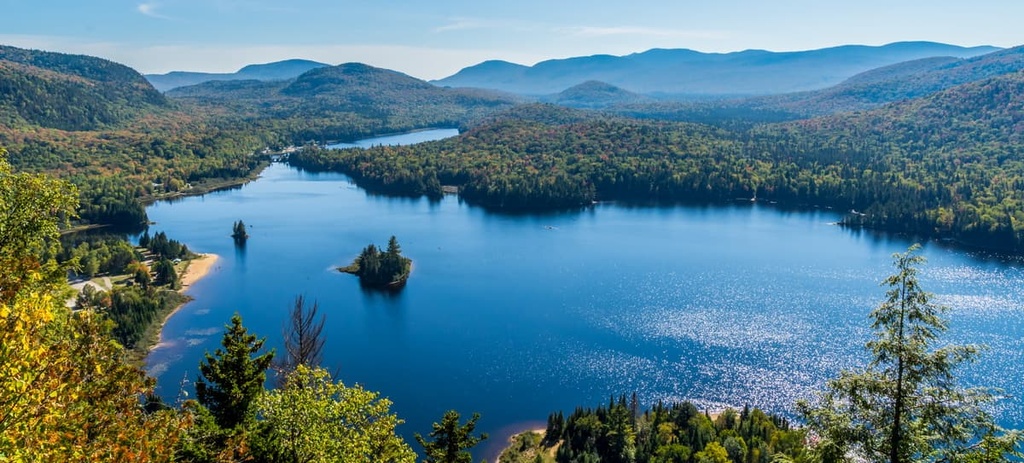
Anyone planning a trip to Mont Tremblant National Park should consider themselves lucky. The park is one of the best places to hike in southern Quebec and it offers a multitude of opportunities for outdoor recreation throughout the year.
But before you leave home, there are a few things that you ought to know about visiting the park. Here’s some key information for anyone making a trip to Mont Tremblant.
Like most national parks of Quebec, Mont Tremblant National Park charges entry fees to all adult visitors.
Visitors to the park can either pay for a daily entry fee (charged per person) or they can pay for an annual pass. Sépaq offers both an annual pass just for Mont Tremblant National Park and an annual pass that grants access to all national parks of Quebec.
However, note that there are additional fees for cross country skiing in the park during the winter months. Skiing at any of the park's 7 ski centers requires a day pass, which is charged in addition to your entrance pass. But you can get a package deal on both your ski ticket and your park entry fee. Discounts are also available if you get a multi-day or a season pass.
Getting to Mont Tremblant National Park by road is generally straightforward.
From Montreal, you can take the Autoroute 15 north until you reach Sainte-Agathe-des-Monts. From there, you can take Route 117 to exit 107 and follow the signs to the La Diable Registration Centre. The Lac Monroe Visitors Centre is located further down the road.
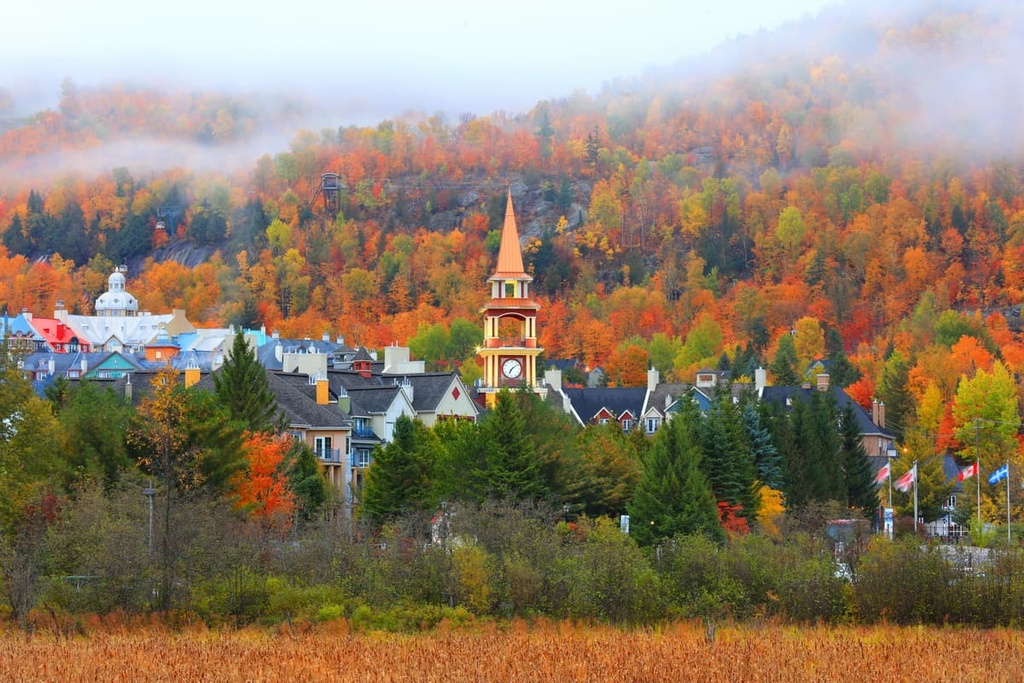
Or, to get to the Pimbina-Saint-Donat Visitors Centre from Montreal, you can take Autoroute 25 north to Route 125. The visitor’s center is located to the north of the village of Saint-Donat.
The other park sectors are both relatively easy to get to from either Saint-Donat or Mont-Tremblant by road. Roads in the general vicinity of the park are also well-signed, so they are generally easy to navigate.
There isn’t much by the way of public transportation to and from the park. However, a local company called D-Tour Tremblant offers both guided tours and shuttle services from the Mont-Tremblant area. Currently, the company offers transportation from hotels in the village of Mont-Tremblant to either La Diable or the Lac Monroe visitors centers.
Mont Tremblant National Park is open all year round to visitors. However, some of the park’s visitor, rental, and discovery centers have different hours during the winter and summer seasons.
You may also find that some of the park’s gravel roads aren’t open during the winter months or that they are covered in snow. If you’re planning a trip to Mont Tremblant during the winter, be sure to come prepared with the right equipment and a vehicle that can handle icy and snow-covered roads.
There are multiple visitor, registration, discovery, and rental centers available in Mont Tremblant National Park, each of which offers different amenities for visitors.
The park’s visitor’s centers include:
Most visitors centers in the park offer equipment rentals and boutique souvenir shops. Park staff are normally available at these visitor centers to provide any information you might need. There are also limited food services available at La Diable, Pimbina–Saint-Donat, and L’Assomption.
However, if you need to stock up on supplies or if you need a specialized piece of outdoor equipment, it’s generally best to travel to Mont-Tremblant or Saint-Donat where there are dozens of stores that cater to outdoor recreationalists.
Looking for a place to stay near Mont Tremblant National Park? Here are some of the best cities and towns to check out in the region:
Mont-Tremblant is a city located just to the south of its namesake national park. The city is home to about 10,000 residents and it is one of the biggest outdoor recreation destinations within a 2 hour drive of Montreal.

In addition to the hiking, climbing, and paddling opportunities available at Mont Tremblant National Park, the community of Mont-Tremblant also offers excellent downhill skiing at the Mont-Tremblant Ski Resort. During the summer months, the ski resort also features a golf course and various water sports on its nearby lake.
Saint-Donat is a small community located within the administrative region of Lanaudière. It is located along the eastern border of Mont Tremblant National Park and is home to around 4,000 people.
The town of Saint-Donat was one of the earlier European communities established in the area, having been founded as a religious community in the 1870s.
Nowadays, it is one of the most popular tourist destinations in the region thanks to its proximity to excellent hiking and skiing opportunities. In fact, the community’s population tends to swell to about 20,000 people in the winter months due to its popularity among tourists.
The largest city in Quebec and the second most populous in Canada, Montreal is a major metropolitan area located about 1.5 hours to the south of Mont Tremblant National Park. Montreal is home to nearly 2 million people in its city proper and nearly 5 million in its greater metro area.
Montreal has long been a center for commerce and transportation in Canada, though it’s a worthy destination in its own right. It was named a UNESCO City of Design in 2006 thanks to its unique cultural landscape.
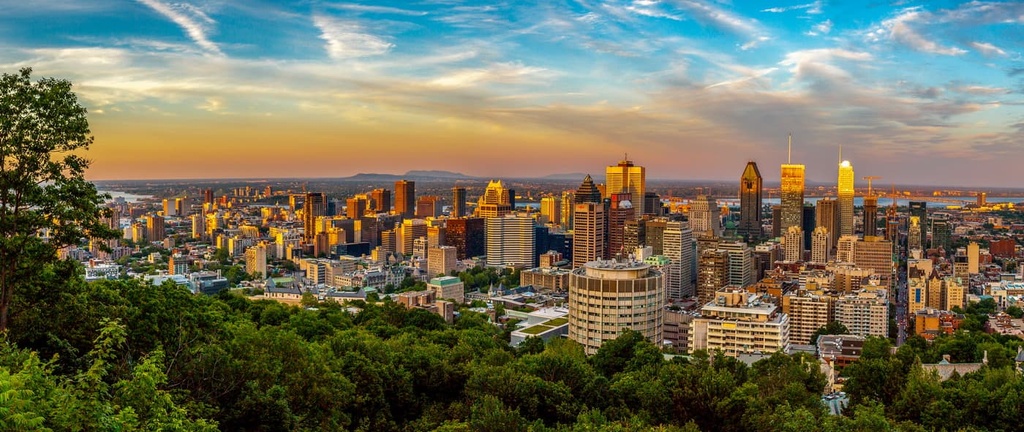
Additionally, Montreal is a great place to start or end your journey to Mont Tremblant National Park. The city is home to a major international airport and it offers good train connections both within Canada through VIA Rail Canada and to the US through Amtrak. Montreal also has good road connections to both the rest of Canada and the US.
Although it’s located just across the border in Ontario, the city of Ottawa is situated just under 2 hours to the south of Mont-Tremblant National Park and serves as an excellent basecamp for your adventures.
Ottawa is the capital of Canada and the country’s fourth largest city. It has an urban population of around 1 million people and a metro population of around 1.5 million people.
In addition to being the seat of the Canadian federal government, Ottawa is a center for commerce, culture, and education in southern Ontario. The city is home to an international airport and it has good bus, rail, and road connections to the rest of Canada.
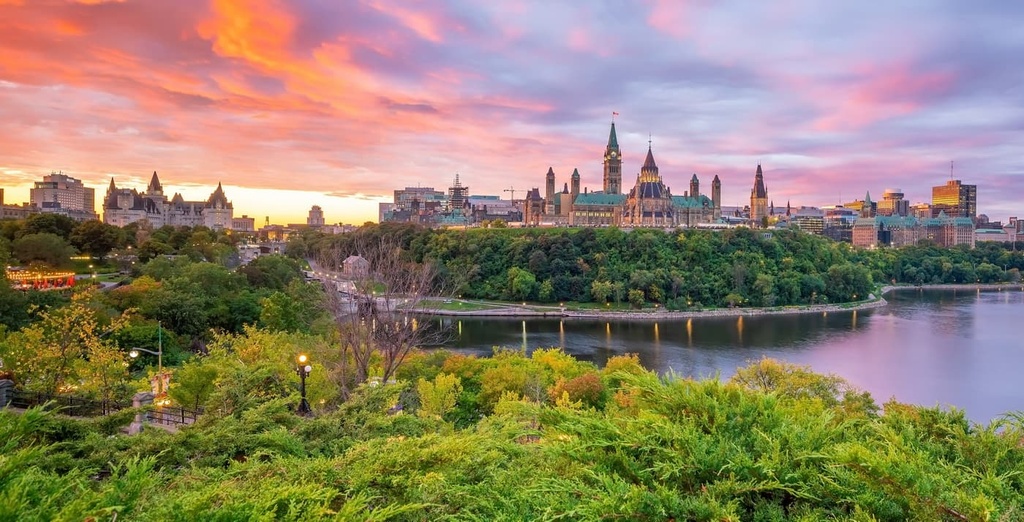
Explore Mont-Tremblant National Park with the PeakVisor 3D Map and identify its summits.








